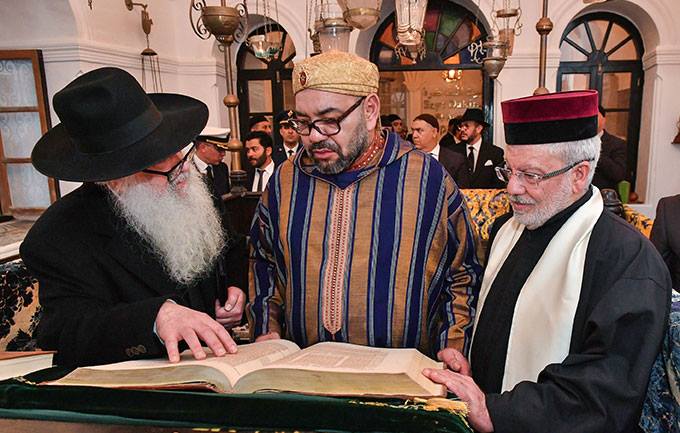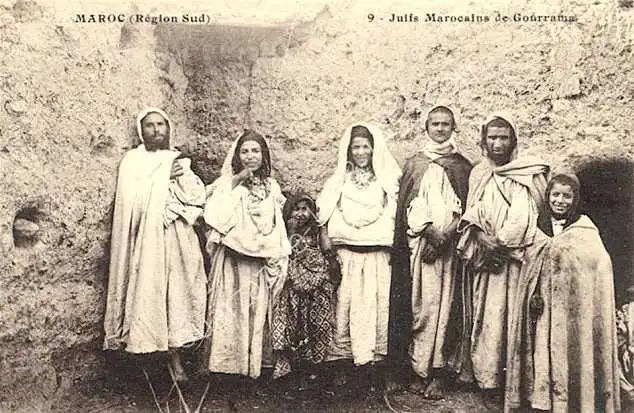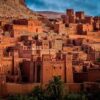The history of Moroccan Jews is a tapestry woven with diverse influences, including the Moors of Al-Andalus, the Spanish Inquisition, and the indigenous Amazigh (Berber) tribes of Morocco. This complex interplay of cultures significantly shaped the Jewish experience in Morocco and influenced the country’s society, architecture, and way of life.
Jewish Prosperity Under Moorish Rule and the Spanish Inquisition
The Moorish rule of Al-Andalus (711–1492) marked a golden age for Jews in Spain. Under the Moors, Jews enjoyed relative tolerance and thrived as scholars, merchants, and artisans. However, this prosperity ended with the Reconquista and the Spanish Inquisition, culminating in the Alhambra Decree of 1492, which expelled Jews from Spain unless they converted to Christianity.
Many Jews fled to Morocco, where they found refuge among both the urban centers and rural Amazigh tribes. Moroccan rulers and Amazigh communities alike welcomed the newcomers, integrating them into the fabric of Moroccan society.
Integration with the Amazigh Tribes
Early Jewish Settlements Among the Amazigh
Jewish presence in Morocco predates the Islamic era, with Jewish communities settling in Amazigh territories as early as the Roman period. These early Jewish settlers coexisted with the Amazigh tribes, often engaging in trade, farming, and craftsmanship.
When Sephardic Jews arrived in the late 15th century, many sought refuge in remote Amazigh regions, such as the Atlas Mountains, the Souss Valley, and the Draa Valley. The Amazigh tribes offered protection and fostered close relationships with Jewish communities.

Shared Lifestyles and Traditions
Economic Collaboration
The Amazigh and Jewish communities often formed symbiotic economic relationships:
- Trade: Jews served as intermediaries between the Amazigh tribes and urban markets, trading goods such as textiles, jewelry, and salt.
- Craftsmanship: Jewish artisans, particularly silversmiths, worked closely with Amazigh tribes, creating intricate jewelry and ceremonial items.
Cultural Exchange
Over centuries, Jewish and Amazigh cultures intertwined:
- Language: Many Jews in Amazigh regions spoke Tamazight, the Amazigh language, incorporating Hebrew and later Ladino influences.
- Festivals: Amazigh and Jewish communities celebrated some local traditions together, reflecting mutual respect and shared experiences.
- Music and Art: Jewish melodies blended with Amazigh rhythms, creating a unique musical tradition. Amazigh art and motifs also influenced Jewish craftsmanship.
The Role of Mellahs in Amazigh Areas
In urban areas, Jews lived in mellahs (Jewish quarters), but in rural Amazigh regions, their settlements were often integrated into the broader tribal structure. These rural communities retained distinct Jewish practices while adopting elements of Amazigh lifestyle, such as clothing styles, architecture, and cuisine.
Jewish Influence on Amazigh Jewelry
Jewish silversmiths were instrumental in creating the distinctive silver jewelry associated with Amazigh culture. These pieces often featured intricate designs, geometric patterns, and symbols that combined Jewish and Amazigh traditions. The craft of jewelry-making became a shared cultural hallmark.
Architectural Influence
Rural Synagogues
In Amazigh regions, synagogues were modest and often blended with the local architectural style:
- Built from adobe and stone, similar to Amazigh kasbahs (fortified villages).
- Simple yet adorned with decorative motifs influenced by Amazigh art.
Fortified Villages
Jewish communities sometimes lived within Amazigh ksars (fortified villages) in the Atlas Mountains and the Sahara. These structures featured communal granaries, narrow streets, and shared courtyards, reflecting the close-knit nature of Jewish and Amazigh life.
Jewish Contributions to Amazigh Society
Agriculture and Commerce
Jewish farmers and merchants played a crucial role in the economic life of Amazigh tribes, introducing techniques for cultivating olive trees, vineyards, and grains. They also facilitated trade between Amazigh regions and larger Moroccan cities.
Diplomatic Roles
Jews often acted as mediators between Amazigh tribes and Moroccan rulers. Their linguistic and cultural fluency made them valuable in resolving disputes and negotiating alliances.
Cultural and Social Harmony
The connection between Jewish and Amazigh communities was marked by mutual respect and shared values. While Jews retained their religious identity, they adopted aspects of Amazigh culture, including:
- Traditional Dress: Jewish women in Amazigh regions often wore Amazigh-style jewelry and clothing, such as the tabizart (woven capes) and tajmaat (ceremonial belts).
- Cuisine: Jewish and Amazigh cuisines influenced each other, with dishes like couscous and tagines reflecting this fusion.
Challenges and Resilience
Despite their close relationship, Jewish communities in Amazigh regions occasionally faced challenges during periods of political instability. However, their integration with Amazigh tribes often provided a layer of protection and solidarity.
Impact on Modern Moroccan Life
Cultural Legacy
The blending of Jewish and Amazigh traditions continues to enrich Moroccan culture today. From music and art to cuisine and craftsmanship, the influence of this unique partnership is evident across the country.
Architectural Heritage
The architectural styles of mellahs, synagogues, and ksars reflect the enduring legacy of Jewish-Amazigh collaboration. Restorations of Jewish sites in Amazigh regions, such as the synagogue in Arazane, highlight this shared history.
Recognition of Shared History
Today, efforts to preserve Jewish and Amazigh heritage celebrate their interconnected histories. Festivals, museums, and cultural initiatives in Morocco increasingly highlight the contributions of both communities.
Conclusion
The relationship between Moroccan Jews, the Amazigh tribes, and the Spanish Inquisition is a testament to the resilience of cultural exchange and mutual support. Jewish communities found refuge among the Amazigh tribes, fostering an enduring partnership that shaped Morocco’s history, lifestyle, and architecture. This shared legacy is a vibrant part of Morocco’s multicultural identity, celebrated as a model of coexistence and cultural enrichment.
Discover the Rich Jewish Heritage of Morocco
The intertwined history of Moroccan Jews, Amazigh tribes, and Moorish influences offers a fascinating glimpse into a unique cultural legacy. From the bustling mellahs of urban centers to the serene synagogues nestled in the Atlas Mountains, Jewish life has left an indelible mark on Morocco’s architecture, traditions, and way of life.
If you’re passionate about history, culture, and timeless stories of coexistence, why not explore it for yourself?
📞 Book your trip today and uncover the Jewish heritage of Morocco!
Call us at +212668690099 to start your journey into Morocco’s vibrant past.
Don’t miss this opportunity to walk through centuries of history, taste the fusion of Moroccan and Jewish cuisines, and witness the architectural marvels that reflect a shared cultural journey. Let us guide you through an unforgettable experience!




